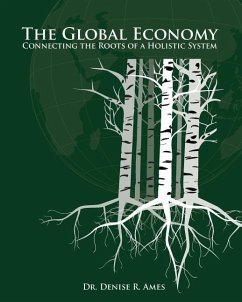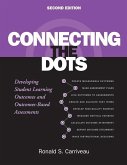The global economy is complex, confusing, and crucial to understand if we are to have a stable economic future. This book helps sort out the often overwhelming financial events that are directly affecting us all, in ways we don't always realize. Applying a holistic, "big picture" approach to the economy, educator Dr. Denise Ames explores the interconnectedness of the various facets of the global economy, including free market capitalism, economic globalization, and financialization. This book is for adult learners, educators, and students from grade nine through university. Each chapter includes "Questions to Consider," spurring critical thinking and encouraging readers to "see" the information from perspectives beyond their own. Pictures, activities, suggestions, images, diagrams, graphs, and free on-line resources all heighten understanding. Chapter 1. An Overview of the Global Economy - Definitions and an overview of the global economy comprise this chapter. A holistic, systems approach is used to describe and critique the global economy. Five contemporary worldviews-indigenous, modern, fundamentalist, globalized, and transformative-shed light on how the global economy is interpreted today. Chapter 2. Historical Roots of the Global Economy - This chapter traces the historical roots of the global economy beginning with the Western European economy around 1500. Events are explained through four historical eras: Commercial Capitalism, (1500-1750), Industrial Capitalism (1750-1914), Early Twentieth Century (1914-1945), and the Post World War II Economy (1945-the 1970s). The chapter concludes with the economic crisis of the 1970s and the shift to the political and economic right. Chapter 3. The Neoliberal Stew: A Dozen Essential Ingredients - The chapter starts with an explanation of the philosophy of neoliberalism and its displacement of managed capitalism. The dozen ingredients include free trade, privatization, deregulation, smaller government, supply side economics, lower taxes, deficit reduction, "markets know best," government support of corporations, labor, rugged individualism, and spreading neoliberalism. Chapter 4. The Impact of Neoliberalism in the United States: Ten Consequences - The ten consequences of neoliberalism and their impact in the United States: reduction of self-reliance and the local economy, unbridled economic growth, rampant consumerism, increased commodification, concentration of corporate power, rise of externalized costs, build-up of debt, emasculation of labor, widening social inequality, and the ascension of dollar democracy. Chapter 5. The Economic Globalization Puzzle: Ten Pieces - The ten pieces of the economic globalization puzzle consist of a reduction of local communities and self-reliance, economic growth, a promoting network, making the rules, free trade, privatization and commodification, concentration of corporate power, specialization, the "squeeze" of labor, and military hegemony. Chapter 6. The Impact of Economic Globalization - In this chapter, the impact of economic globalization around the world is evaluated. The direst economic impact, as explained, is on the environment, contributes to greater inequality, and depresses general well-being. Chapter 7. The Financial Sector: Ten Fatal Flaws - After an overview of the financial sector, ten of its fatal flaws are described and evaluated: large banks, deregulation, the Federal Reserve, a real estate bubble, mountains of debt, dicey financial products, speculation, moral hazard and lack of transparency, deceptive rating agencies, and bloated compensation schemes. Chapter 8. The Financial Sector: Crisis and its Aftermath - The patterns of the financial crises are analyzed and several examples are given, including the "tulip mania." The 2008 financial crisis is explained in some depth and its aftermath evaluated. What is the "new normal?"
Hinweis: Dieser Artikel kann nur an eine deutsche Lieferadresse ausgeliefert werden.
Hinweis: Dieser Artikel kann nur an eine deutsche Lieferadresse ausgeliefert werden.








